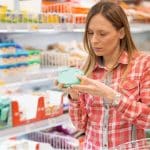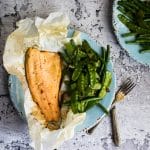
How to stay hydrated and best drink choices
The purpose of water:
- Carries nutrients around the body
- Removes waste
- Controls body temperature by regulating the amount of fluid we lose through breathing and sweating
How much fluid do we need?
- Water makes up for about two-thirds of a healthy body in an adult.
- Males have more water than females due to a difference in the proportion of body fat.
- As we age, body water decreases, but it’s still vital to have enough to stay healthy and prevent problems such as constipation, urinary tract infections and kidney stones.
- Around 20% of our total water intake is sourced from the food we eat, which means the rest we need to top up through drinking fluid.
- The European Food Safety Authority recommends that women should drink about 1.6 litres of fluid (8 cups) and men should drink about 2.0 litres of fluid (10 cups) per day as a guide.
- For pregnant women an additional 300mls a day it is recommended and for breast feeding women an addition 600-700mls.
- If it is hot or you are exercising, more water will be needed. For the majority of active people drinking just extra water is needed to stay hydrated. However, for high intensity exercise that lasts more than 40 minutes or so, try a homemade sports drink by adding a little sugar or unsweetened fruit juice and a pinch of salt to help replace the extra fluid and salt lost as sweat.
- If you are mildly dehydrated, feeling thirty is the first sign, although the sense of thirst may not be as strong in older people.
- A headache, lack of energy and dark urine are all more signs that you need to rehydrate yourself.
Types of fluid
Water
Water is the best choice to rehydrate yourself, it does not add calories, nor does it damage your teeth as it is sugar-free. If you do not like the taste of tap water, adding a slice of lemon or using a filter can make the taste more palatable.
Juices and smoothies
The sugar found within the whole fruit and vegetables is contained within the structure of these foods and are released through juicing or blending. If you intend to drink fruit juices, choose 100% fruit juice with no added sugar and limit to one glass a day, this can count towards one of your 5-A-DAY. No matter how much of this you drink, it will only count as one portion. Drinking juices frequently can also damage your teeth and therefore you should not consume more than 150ml every day.
Smoothies that are a 100% fruit or vegetable mix and contain all the edible pulp can count up to two portions of your 5-A-DAY depending on the quantity and how it is made. However, juices drunk in addition to the smoothie will not count as any more of your 5-A-DAY portion in one day. This is mainly because juice contains less fibre than whole fruits and vegetables. Although natural juices and smoothies contain some vitamins, these are best eaten in their whole form. Each whole fruit or vegetable portion should be a different fruit or vegetable to count as one of your 5-A-Day. By eating a variety of fruit and vegetables this will enhance your ability to eat all the vitamins and phytochemicals that your body needs for health.
Fizzy and soft drinks
Although a potential source of water, fizzy drinks often have a high sugar content which means they are high in calories and can contribute to becoming overweight and to tooth decay due to the sugar and acidity content. Many, but not all, are of little nutritional value other than calories. Limit consumption of standard sugar-containing soft drinks and choose sugar-free (low calorie) versions instead. Try to gradually change to drinking plain water or adding a twist of lemon or lime to water for a refreshing cool drink.
Milk
A low-fat milk or unsweetened milk alternatives are also good choices. Limit flavoured milkshakes and energy or malt drinks due to the additional added sugar which can potentially cause damage to the teeth.
Tea, coffee and energy drinks
Tea and coffee can be consumed as part of a balanced diet, but these should not be your only fluid source. Caffeine is a stimulant meaning it can temporarily make one feel more alert or less drowsy and affects some people more than others. If you drink caffeinated drinks, aim to limit to 400mg of caffeine a day, that is up to four mugs of instant coffee and drink water as the rest of your fluid intake.
Pregnant women should limit their caffeine intake to no more than 200mg a day. Try fruit or herbal teas as an alternative hot drink.
Energy drinks are often high in caffeine, other stimulants, additives and sugar, therefore try to limit or cut these down gradually if you drink these. Although caffeine can act as an initial ‘pick me up’ it can make you feel tired later and even disrupt your sleep.
Alcohol
Alcoholic drinks contain water but alcohol increases urine output and drinking too much can lead to becoming dehydrated. Keep alcohol consumption within the recommended limits, no more than 1-2 units per day (14 units a week) for both men and women with at least 2 consecutive alcohol-free days a week. Aim to drink some water in addition, especially if it is hot.
Tips for increasing your water intake
- Fill up a 1.5 Litre bottle with water every morning and try to finish this by the end of the day (do not reuse plastic bottles which have deteriorated and ensure they are clean before reusing so that they are hygienic to use).
- Infuse your water with a squeeze of fruit or crushed mint if you find it hard to drink tap water.
- If you rely on caffeinated drinks, add up how much you drink and set yourself a target of no more than 4 cups a day (no more than 2 cups/200mg a day for pregnant women). Try to replace with herbal or fruit teas.
- Make it a morning ritual. Start your day by drinking a cup of water and between meals for the rest of day.
- If you drink fruit juice, limit to one glass a day and dilute this with water to make three glasses.


